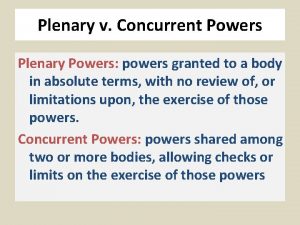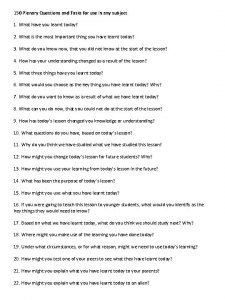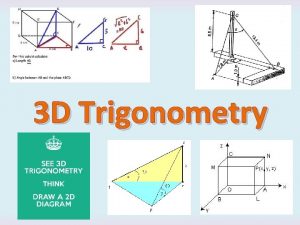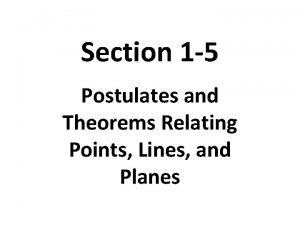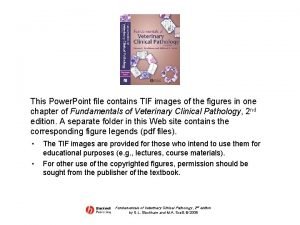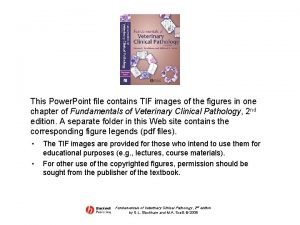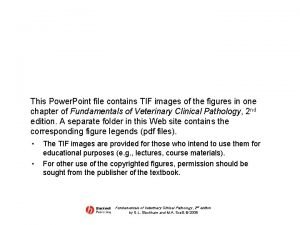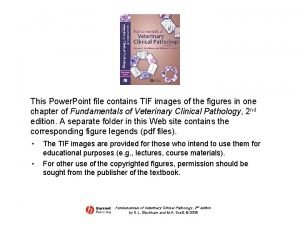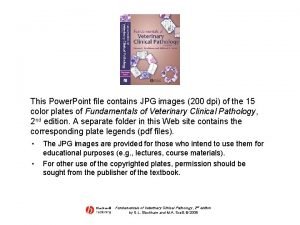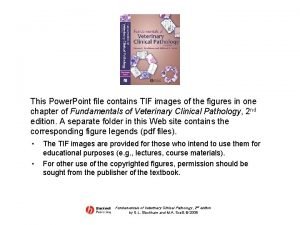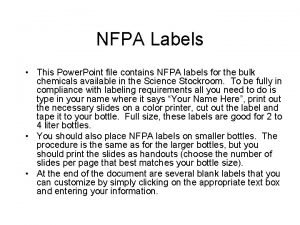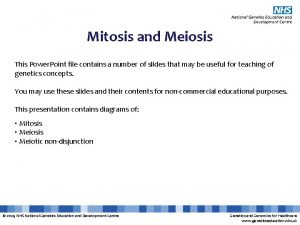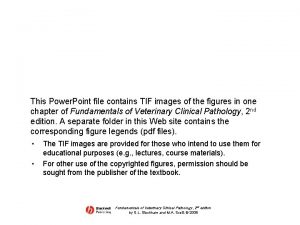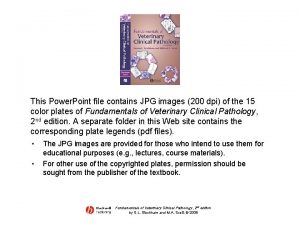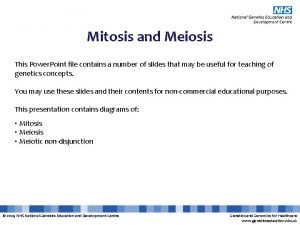Plenary This Power Point file contains the Plenary


















- Slides: 18

Plenary This Power. Point file contains the Plenary for this chapter in Biology For You. Most of these slides are paired with a corresponding slide in the Power. Point of the Learning Objectives for this chapter. As well as using the relevant slide to test your students and to evaluate how well they have understood each section of work, you may also find the slides useful for a quick revision course. Chapter 1

animal cells part name function a b c d Ch 1

animal cells part name function a membrane controls substances entering and leaving the cell b c d mitochondria nucleus cytoplasm site of respiration controls cell activity site of cell’s chemical activity Ch 1

Plant cells part name a b c d e f g Ch 1

Plant cells part name a b c d e f g function cell wall membrane cytoplasm chloroplast vacuole mitochondria nucleus Ch 1

Plant cells part name a function cell wall supports the cell b membrane controls substances entering and leaving the cell c cytoplasm site of cell’s chemical activity d e f g chloroplast site of photosynthesis vacuole contains cell sap mitochondria site of respiration nucleus controls cell activity Ch 1

Plant and animal cells Animal cells contain: Plant cells contain: 1……………. . : controls cell activity cytoplasm: site of cell’s 2……………. . : 3……………. . : : controls substances entering and leaving the cell no chloroplast no cell wall no large vacuole 4……………. . : : site of 5……………. . : 6……………. . : large 7……………. . : Ch 1

Plant and animal cells Animal cells contain: Plant cells contain: nucleus: controls cell activity cytoplasm: site of cell’s chemical reactions cell membrane: controls substances entering and leaving the cell no chloroplast no cell wall no large vacuole chloroplast: site of photosynthesis cell wall large vacuole Ch 1

Specialised cells Plant 1 chloroplasts • Palisade cells are specialised for photosynthesis because they have many 1…………. . . 2 absorption • Root hair cells have a large surface area for 2……………. 3 contraction Animal 4 impulses • Muscle cells are specialised for 3…………. . 5 sperm • Nerve cells carry nerve 4…………. . • 5…………. . cells swim. 6 nucleus • Red blood cells have no 6 ……………… to make more space for haemoglobin. Ch 1

Amoeba • Moves and changes shape by making 1…………. . . • Food taken in and digested in 2……………. • Large surface area to volume ratio so diffusion is very 3………… 1 pseudopodia 2 food vacuoles 3 fast Ch 1

Tissues and organs 1 tissue 2 organ 3 leaf 4 liver 5 digestive • • • 6 organism A group of similar cells working together is called a 1…………. . A group of tissues working together creates an 2……………. A 3…………… is a plant organ. The 4 ……………. is an organ in your body. A group of organs working together is an organ system like the 5………………. . system A group of organ systems working together makes an whole 6…………. Ch 1

Surface area to volume ratio • A high SA / V ratio means a larger surface relative to cell volume • This means that diffusion will be 1…………. . , • and the cell will use up 2……………. more quickly. 1 faster 2 oxygen Ch 1

Diffusion is the movement of the 1…………………. of a substance from an area of their 2…………………. concentration to an area of their 3………… concentration. 1 particles 2 higher 3 lower Ch 2

Osmosis 1 diffusion 2 water 3 membrane 4 control 5 high 6 low • Osmosis is a special case of 1…………. • Osmosis only involves 2…………… molecules. • Osmosis involves a partially permeable 3…………. • Cell membranes are partially permeable. • Cell membranes 4……………… substances entering and leaving the cell. Osmosis is the movement of water molecules from an area of their 5……………. concentration to an area of their 6……………… concentration through a partially permeable membrane. Ch 2

Osmosis in plant cells • Plant cells have a cell wall and a cell 1…………. . . 1 membrane • the cell membrane is partially 2…………………. 2 permeable • The cell wall is fully permeable and is 3………. • The vacuole is full of watery cell sap. 3 tough • Water enters the cell by osmosis if the water 4 concentration 4……………… outside is greater than 5…………. . 5 inside • A cell so full of water that the cell wall is tense is called 6……………. 6 turgid Ch 2

Osmosis in animal cells • If there is not enough sugar in the blood the water concentration of the blood 1…………. • Water 2………. . the red cells by osmosis. • The red cells 3…………. 4………… 5……… Ch 2

Osmosis in animal cells • If there is not enough sugar in the blood the water concentration of the blood rises. • Water enters the red cells by osmosis. • The red cells swell. osmosis water Ch 2

Active transport 1 against 2 energy 3 membrane 4 intestine 5 kidney 6 minerals • If a cell needs to absorb a substance 1…………. . the concentration gradient, it has to use active transport. • Active transport uses 2……………. • Particles are carried across by special proteins in the cell 3……………. • This is how the 4……………. . absorbs all the sugar into the blood. • This is how the 5……………… reabsorbs all the sugar from the urine. • This is how plant root hairs absorb 6……………… from the soil water. Ch 2
 File-file yang dibuat oleh user pada jenis file di linux
File-file yang dibuat oleh user pada jenis file di linux Plenary power
Plenary power Triangle of power
Triangle of power Power bi training powerpoint
Power bi training powerpoint Point point power
Point point power Physical image vs logical image
Physical image vs logical image File sharing management system
File sharing management system Remote file access in distributed file system
Remote file access in distributed file system What does a markup tag tells the web browser
What does a markup tag tells the web browser In a file-oriented information system, a transaction file
In a file-oriented information system, a transaction file Providential inspiration
Providential inspiration Quick plenary ideas
Quick plenary ideas Plenary questions
Plenary questions Plenary pyramid
Plenary pyramid Genitive case meaning
Genitive case meaning Postulates and theorems relating points lines and planes
Postulates and theorems relating points lines and planes Hát kết hợp bộ gõ cơ thể
Hát kết hợp bộ gõ cơ thể Lp html
Lp html Bổ thể
Bổ thể

